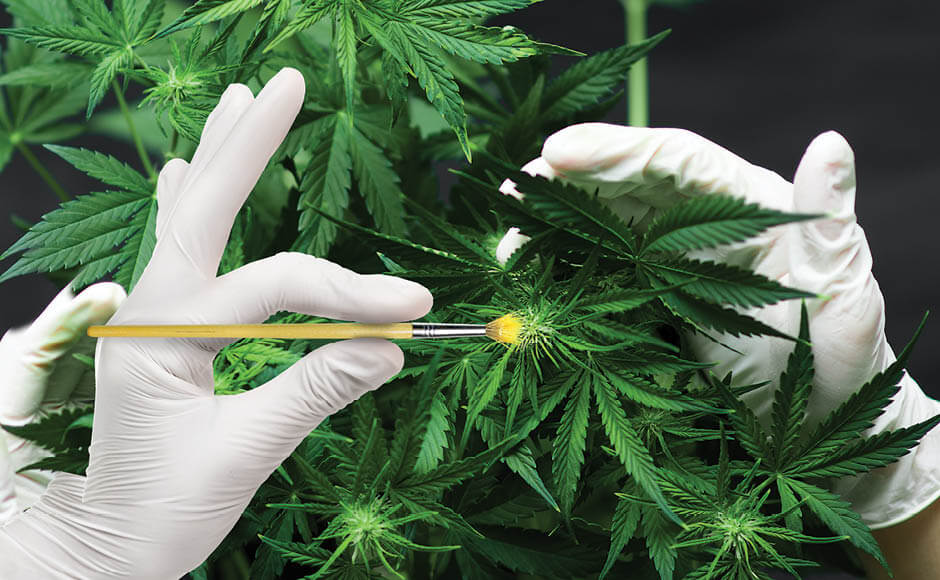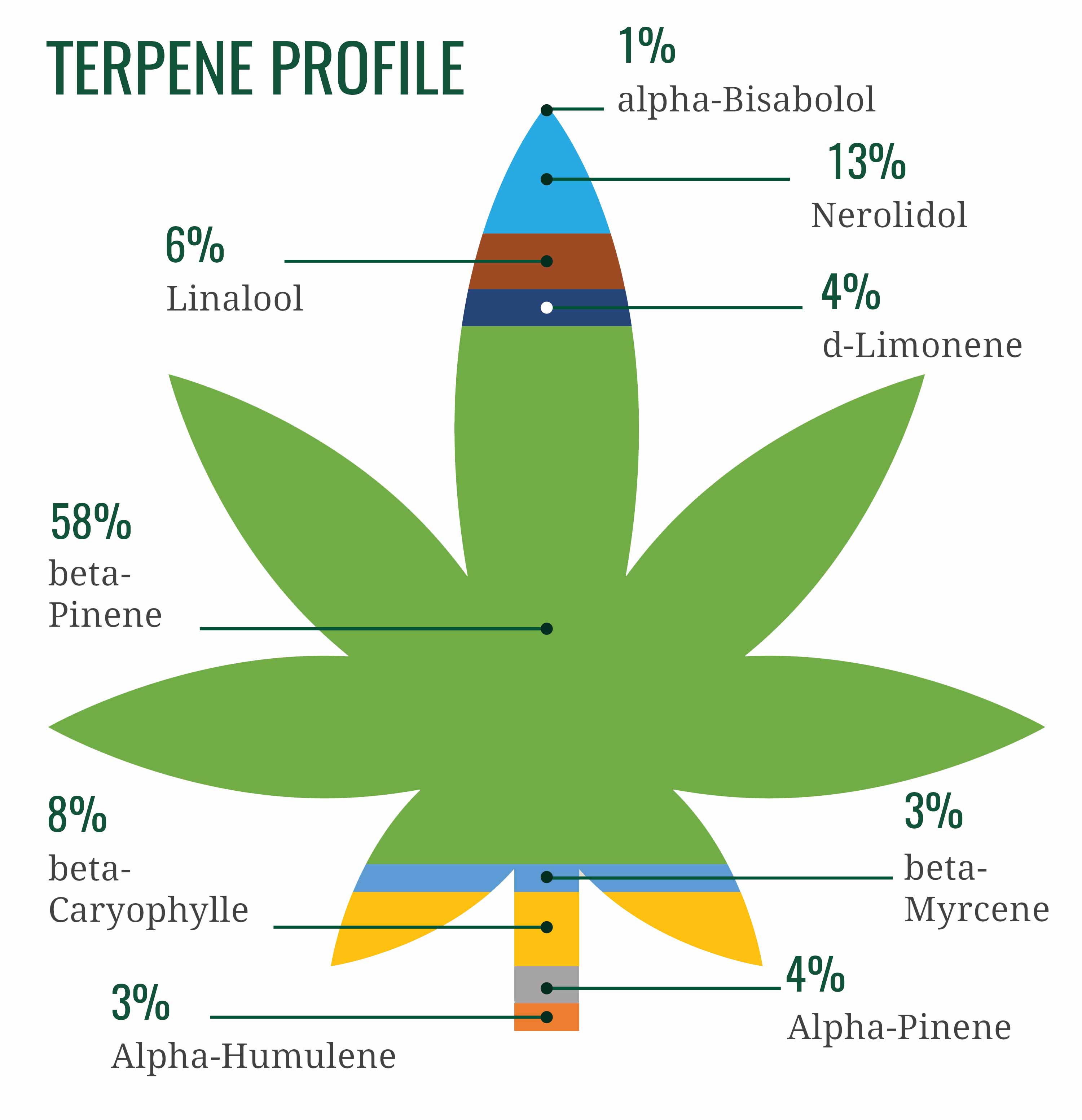The cannabis industry is undergoing a renaissance, with breeders spearheading a revolution in strain development.
As the demand for diverse and potent cannabis varieties skyrockets, the future of breeding promises to be an exciting frontier. From leveraging cutting-edge genetic engineering techniques to optimizing terpene profiles, the possibilities are endless. In this article, we'll delve into the innovative approaches, emerging trends, and potential implications that are poised to shape the cannabis landscape in the years to come.

IMAGE: Weed World Magazine
The Rise of Genetic Engineering
One of the most significant advancements in cannabis breeding is the application of genetic engineering techniques, particularly CRISPR technology. CRISPR allows for precise genetic modifications, enabling breeders to target specific traits and characteristics with unprecedented accuracy. This technology holds immense potential for optimizing cannabinoid and terpene profiles, enhancing potency, and improving resistance to pests and diseases.
Moreover, the ongoing efforts to map the cannabis genome are paving the way for targeted trait selection. By identifying the genetic markers associated with desirable traits, breeders can streamline the breeding process and develop strains with consistent and predictable characteristics. This level of precision not only improves product quality but also opens doors for tailored medical applications.

IMAGE: Merry Jane
Innovative Breeding Techniques
While genetic engineering is making waves, traditional breeding techniques are also evolving. One such approach is polyploid breeding, which involves inducing polyploidy (multiple sets of chromosomes) in cannabis plants. This technique can lead to increased vigor, yield, and resistance to environmental stresses, although it may also result in undesirable traits that require careful selection.
Another promising technique is marker-assisted selection, which utilizes genetic markers to identify and select for specific traits during the breeding process. This approach can significantly accelerate breeding cycles, allowing for faster strain development and adaptation to changing market demands.

IMAGE: Research Gate
Emerging Trends in Cannabis Breeding
As our understanding of the cannabis plant deepens, breeders are exploring new frontiers in strain development. One notable trend is the optimization of terpene profiles. Terpenes, the aromatic compounds responsible for the distinct flavors and aromas of cannabis strains, are believed to contribute to the plant's therapeutic effects through the "entourage effect." Breeders are now focusing on developing strains with specific terpene profiles tailored to desired experiences or medicinal applications.
Additionally, cannabinoid ratio engineering is gaining traction. By manipulating the ratios of various cannabinoids, such as THC and CBD, breeders can create strains with unique effects and potential medical applications. This approach holds promise for addressing specific conditions and improving treatment outcomes.
Breeding for pest and disease resistance is also a critical focus area. As the cannabis industry expands, sustainable cultivation practices become increasingly important. Developing resilient strains that can withstand pests, diseases, and environmental stresses will not only improve yields but also reduce the need for harmful pesticides and promote eco-friendly cultivation methods.

IMAGE: Jimmys Cannabis Shop
The Future of Cannabis Cultivation
The future of cannabis breeding is intrinsically linked to the evolution of cultivation practices. As indoor and outdoor growing methods continue to advance, breeders will need to adapt their strategies accordingly. Indoor cultivation offers precise environmental control but comes with higher energy costs and carbon footprints. Outdoor growing, on the other hand, relies on natural conditions but may be more susceptible to pests, diseases, and weather patterns.
The integration of automation and vertical farming technologies presents exciting opportunities for efficient and sustainable cultivation. By leveraging these innovations, breeders can optimize growing conditions, monitor plant health, and streamline breeding programs.
Moreover, environmental considerations are becoming increasingly important. As climate change impacts agricultural practices, breeders must develop strains capable of thriving in varying conditions, such as drought or extreme temperatures. Sustainable breeding practices that prioritize resource conservation and biodiversity will be crucial for the long-term viability of the industry.
Key Takeaways
The future of cannabis breeding is brimming with potential, driven by cutting-edge techniques, emerging trends, and a commitment to innovation. From precision genetic engineering to optimized terpene and cannabinoid profiles, the possibilities are endless. However, responsible and ethical breeding practices must remain at the forefront, ensuring product safety, quality control, and environmental sustainability.
As the industry continues to evolve, collaboration between breeders, researchers, and regulatory bodies will be essential to navigate legal and ethical considerations while unlocking the full potential of cannabis breeding.
FAQs
- What are the potential risks associated with genetic engineering in cannabis breeding? While genetic engineering offers numerous benefits, there are concerns regarding potential unintended consequences and long-term effects on plant biology and ecosystems. Thorough research, risk assessments, and regulatory oversight are necessary to ensure responsible application.
- How can breeders ensure product safety and quality control? Implementing robust quality control measures, such as genetic testing, chemical analysis, and standardized cultivation practices, is crucial for ensuring product safety and consistency. Additionally, adhering to industry regulations and best practices is essential.
- What role will regulatory bodies play in the future of cannabis breeding? As the cannabis industry continues to evolve, regulatory bodies will play a crucial role in establishing guidelines, overseeing research, and ensuring compliance with legal and ethical standards. Collaboration between breeders, researchers, and regulators will be vital for responsible innovation.
- How will advancements in cannabis breeding impact medical research and treatment options? By enabling the development of strains with specific cannabinoid and terpene profiles, advancements in cannabis breeding hold significant potential for improving medical research and treatment options. Tailored strains could target specific conditions or symptoms, enhancing therapeutic efficacy and patient outcomes.
- Are there any ethical concerns surrounding the manipulation of cannabis genetics? As with any genetic modification, there are ethical considerations regarding the manipulation of cannabis genetics. Concerns include potential environmental impacts, unintended consequences, and the need for transparency and informed consent. Open dialogue and adherence to ethical guidelines are essential for responsible breeding practices.
Remember to check out our collection of cannabis grow books for more in-depth information and expert guidance on cultivation techniques.
